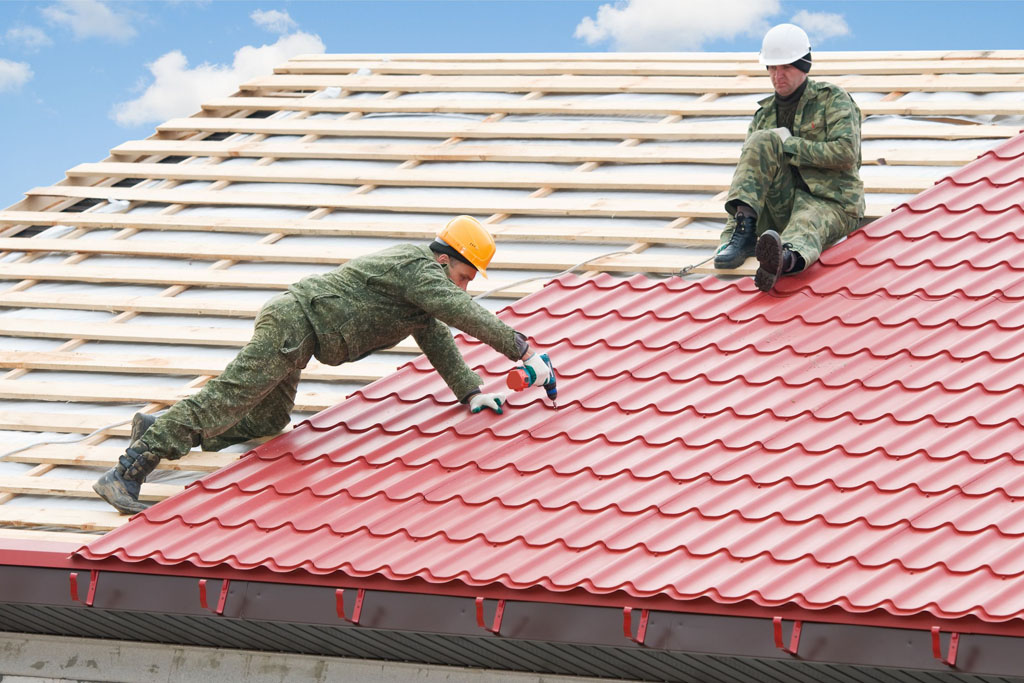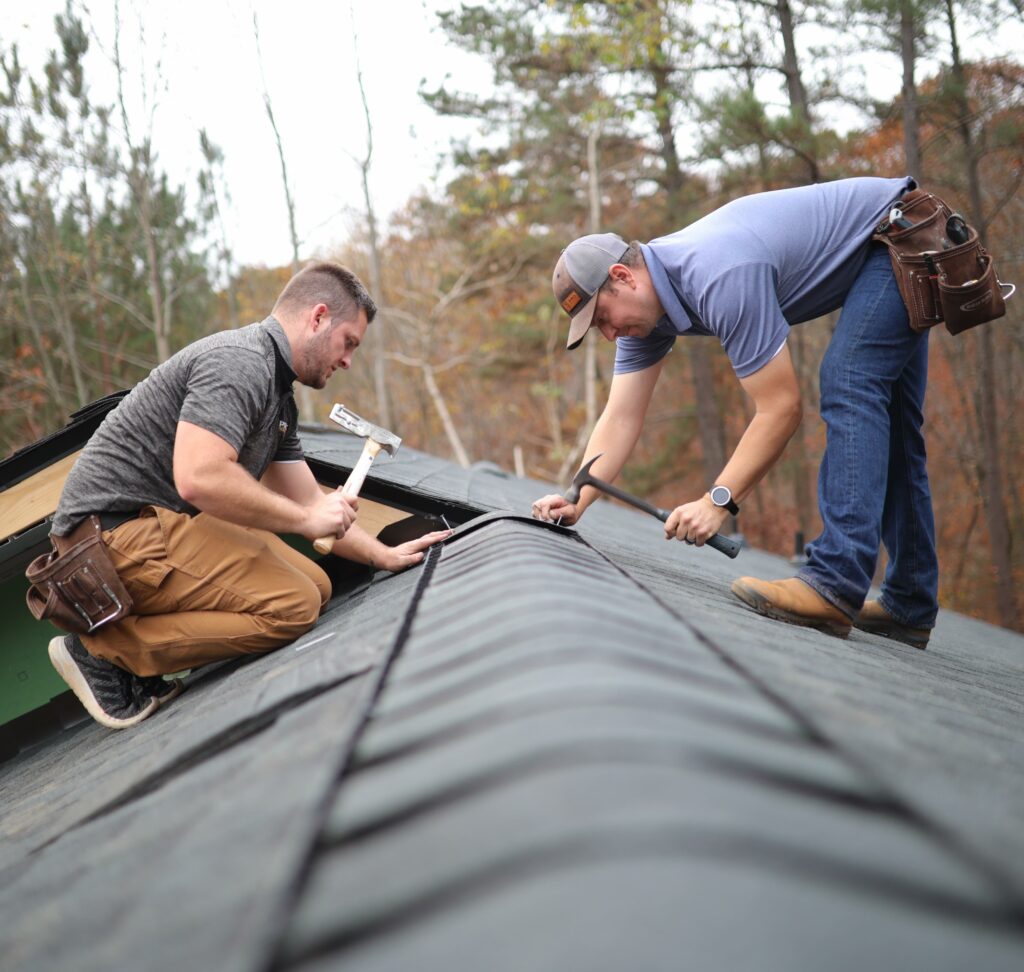Top Experts in Cuyahoga Falls Roof Repairs for Quick and Efficient Service
Top Experts in Cuyahoga Falls Roof Repairs for Quick and Efficient Service
Blog Article
A Comprehensive Guide to Effective Roof Flat Roofing Installment
The intricacies of flat roofing system installation need a precise technique, starting with a comprehensive understanding of various level roof covering kinds and the necessary materials required for optimal performance. A successful installation pivots not just on the selection of products however likewise on the prep work and execution of each step included in the process.
Understanding Flat Roofing System Kind
When thinking about level roof coverings, it is important to understand the various types readily available, as each deals distinctive benefits and negative aspects customized to particular requirements. The most usual sorts of flat roofing systems include Built-Up Roof (BUR), Customized Asphalt, and Single-Ply membrane layers.
Built-Up Roof includes numerous layers of asphalt and crushed rock, supplying excellent toughness and weather condition resistance. It is especially advantageous in areas prone to severe climate condition but may require more maintenance as a result of its complex construction.
Modified Bitumen is a prominent option for its simplicity of installation and versatility. It usually employs a self-adhesive or torch-applied technique, which can be advantageous for quick repair services and long-lasting performance. Nonetheless, its life expectancy can be much shorter compared to BUR.
Single-Ply membrane layers, consisting of Thermoplastic Olefin (TPO) and Ethylene Propylene Diene Monomer (EPDM), are acknowledged for their lightweight nature and power effectiveness. These products are frequently favored for industrial buildings as a result of their cost-effectiveness and ease of installment (Cleveland Roofing Specialists). Nevertheless, they may not offer the very same level of insulation as various other options.
Each roofing kind requires cautious consideration based upon environment, budget plan, and particular project demands.
Crucial Materials for Apartment Roof Covering
A range of crucial materials are essential for the effective installment of flat roof covering systems. The option of materials directly effects resilience, performance, and overall efficiency.
One of the primary materials is the roof membrane layer, which can be constructed from numerous substances such as polycarbonate polyolefin (TPO), ethylene propylene diene monomer (EPDM), or PVC. Each type supplies special benefits, consisting of UV resistance and versatility, which are crucial for extended efficiency.
Along with the membrane, insulation products play a substantial duty in energy performance. Inflexible foam boards or polyisocyanurate insulation are popular options, as they supply outstanding thermal resistance and dampness administration.
In addition, roofing adhesives and sealers are necessary for making certain a leak-proof installment. These products must work with the chosen membrane layer to avoid wear and tear with time.
Getting Ready For Installation
Correct preparation is vital for an effective level roofing system setup, as it prepares for a resilient and effective roof. Begin by performing a comprehensive assessment of the existing roof structure. Look for signs of damage, including leakages, rot, or inadequate water drainage, which might jeopardize the brand-new roof covering system. Ensure that the underlying materials are audio and can sustain the weight of the brand-new roof elements.
Following, collect all required devices and products, guaranteeing that they fulfill industry requirements. This includes waterproof membranes, insulation, blinking, and fasteners. Acquaint yourself with the manufacturer's requirements, as adherence to these guidelines is vital for guarantee purposes.
Additionally, ensure that the job area is free from debris and obstructions to promote effective and risk-free installment. Consider weather condition problems; avoid installation during heavy rain or severe temperature levels, which can influence product efficiency. Finally, notify any residents of the structure about the future work to ensure safety and lessen disruptions. By taking these primary actions, you can boost the likelihood of a successful level roof covering setup that meets both aesthetic and structural needs.
Step-by-Step Installment Process
With the groundwork developed with complete prep work, the next stage entails carrying out the flat roof installment methodically. Begin by ensuring that the architectural deck is cost-free and tidy from debris. Next, install a vapor barrier to avoid wetness buildup underneath the roofing product. This step is crucial for keeping the roof covering's integrity with time.
Complying with the vapor obstacle installation, lay down insulation boards, ensuring they fit tightly together to minimize thermal bridging. Safeguard the insulation with appropriate fasteners based on the roofing kind and neighborhood building codes. Once the insulation remains in location, it's time to apply the roof membrane layer. Relying on the chosen material-- such as TPO, EPDM, or customized bitumen-- mount the membrane according to the maker's specs.
Make sure correct overlap at seams and sides to develop a watertight seal. Utilize adhesives, mechanical fasteners, or warmth welding as required. Ultimately, install flashing around boundaries, vents, and any roofing system penetrations to enhance waterproofing. After setup, perform a thorough assessment to determine any kind of potential issues before ending the task, making sure a reliable and robust level roofing system.
Maintenance Tips for Durability
Routine maintenance is vital to make certain the durability and performance of a flat roof covering. One of the key tasks is to conduct regular evaluations a minimum of twice a year, ideally in spring and fall. During these evaluations, search for indications of wear, such as blisters, fractures, or pooling water, which more info here can suggest underlying concerns.

Making certain appropriate drain is important to stop water build-up. Inspect and clear seamless gutters, downspouts, and scuppers to ensure unblocked water flow. Additionally, examine seals around vents, skylights, and other infiltrations for any kind of signs of degeneration, using caulk or sealer as required to keep a leak-proof barrier.
Last but not least, consider specialist upkeep services every few years for complete maintenances. By adhering to these maintenance ideas, you can considerably extend the life of your flat roofing, guaranteeing it continues to be a dependable shield against the elements.
Final Thought
Effective level roofing setup requires an organized technique including detailed assessments, material selection, and meticulous prep work. Sticking to the laid out actions throughout the installment process makes sure the appropriate application of roofing membranes and insulation while enhancing waterproofing with reliable flashing setup.
The intricacies of flat roofing setup demand a meticulous technique, starting with a comprehensive understanding of numerous level roof types and the important materials required for optimum efficiency.Proper prep work is essential for an effective level roof covering installation, as it lays the groundwork for a reliable and sturdy roofing system. After installation, carry out a complete evaluation to determine any type of potential concerns before concluding the project, guaranteeing a reputable and robust level roofing system.

Report this page